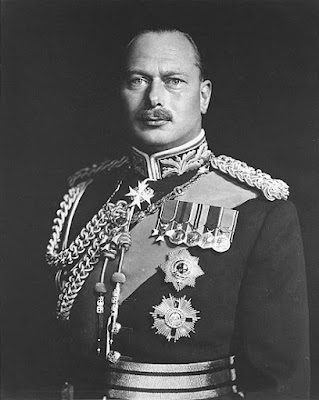LMRMS, LOVEDALE IN THE 1940s
July 3, 1942 was a red letter day in the history of The Lawrence Memorial Royal Military School, Lovedale. On that day, His Royal Highness Prince Henry, the Duke of Gloucester, younger brother of the reigning King Emperor George VI visited Lovedale. This was the very first visit by a member of the British Royal Family in the history of the school.
Unfortunately, the heavy monsoon rains that day prevented the School from arranging an outdoor parade but His Royal Highness visited the Boys’, Girls’ and Prep Schools.
Shortly after, His Majesty, the King Emperor graciously acceded to the School’s request that His Royal Highness Prince Henry be the Royal Patron of the LMRMS.
The Rev C B Hall passed away in 1942. He was succeeded as Principal in 1943 by the Rev F R L Brooke MA Cantab who was no stranger to the School having been the Headmaster from 1940.
The above picture of Rev Brooke and Mrs Brooke is from the collection of School pictures of OL Norman R Minus- so kindly shared with us by his daughter, Ms. Sharman Minus.
Rev Brooke was a popular Principal as he was well-versed with the School system.
In the last blog post, OL Peter Forkgen (1929-2017) who studied in Lovedale from 1935 to 1946 had written about the school uniforms of those times.
Today, we share what he recalled for us of the School Routine in the Boys'School in the 1940s. He wrote:-
" A time lapse of about 75 years may have diminished my memory a little, so there will be readers of this who may rightly disagree with the exact times of events – but they are reasonably close to allow time for the progress of events through the day. Monday - Friday. 6 a.m. Reveille. Awakened by Sarge Nicholls, whose private apartment was located at one end of the Junior Boys’ dormitory, the selected boy from the School band would sound “Reveille” military style on the bugle at a couple of strategic locations in the dormitory areas. There were always those students who, in addition to the bugle, required a shout, or a snarl from the Prefect in charge, or even having all his bedding unceremoniously dumped on the floor beside his bed. Boys hurriedly did their toilet and dressed in sports shorts and shoes and “singlet” shirts, and went to the “mess" | ||
(dining) hall for a half mug of slightly sweetened thin coffee and a bun. 6.45 a.m. Assembled in their respective platoons (according to age) on the parade grounds (Top Flat or Middle Flat) for P.T. (Physical Training - Calisthenics, various exercises, jogging, etc.) 7.30 a.m. Return to dormitories. Clean up and dress in the uniform of the day. Tidy dormitories to pass inspection from the Prefect in charge. 8 a.m. Breakfast. 9 a.m. - 12 noon. Morning classes. (with a 15 minute break mid-morning). 12 noon. Lunch 1 p.m. – 4 p.m. Afternoon classes 4.30 p.m. – 5.45 p.m. Sports of various kinds.....Football, field hockey, cricket, gymnastics, field events (races, relays, high and long jumps, shot putt) The student body was divided up into four “Houses” – Lawrence, Murray Hammick (or just simply Hammick), Padfield and Hope Grant. Within each House, students were assigned to groups, referred to as “Elevens” on the basis of their age level. Throughout the year the several “elevens” in each House competed with their equivalent level in the other Houses in all sports activities (and other competitive events)........ with a view to accumulating the most points to win the coveted Board of Governors Shield, awarded to the “best” House.
|








2 comments:
Really enjoyed reading this...Thank you so much for putting it up...
Interesting chapter. The routine was similar to what I experienced in 1952, except that we did not have church parade.
The Grant-in-Aid of Rs 2,10,000 from Army HQ would be about Rs 4 - 5 crores in terms of today's purchasing power.
Post a Comment